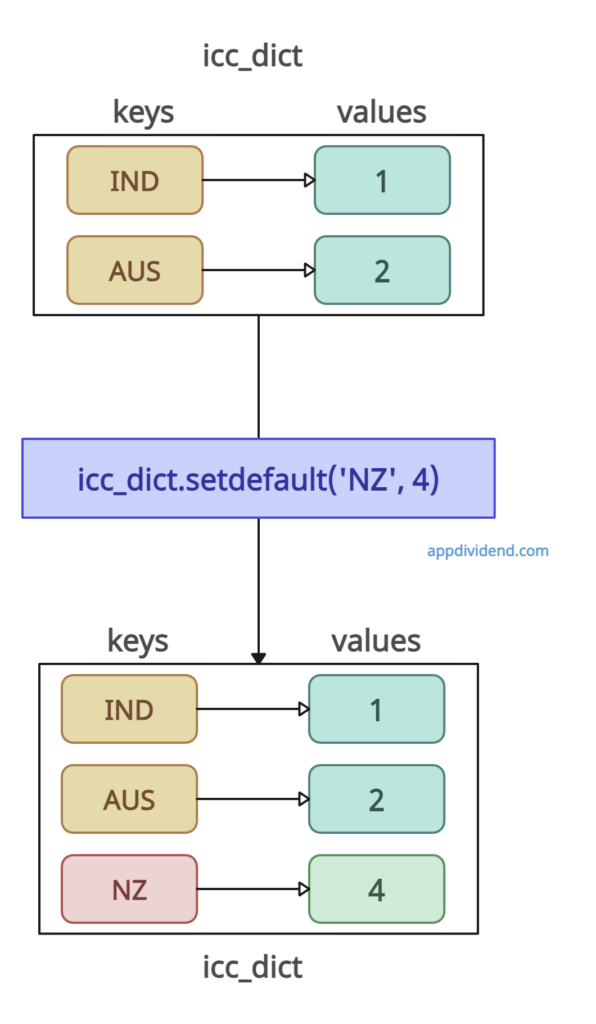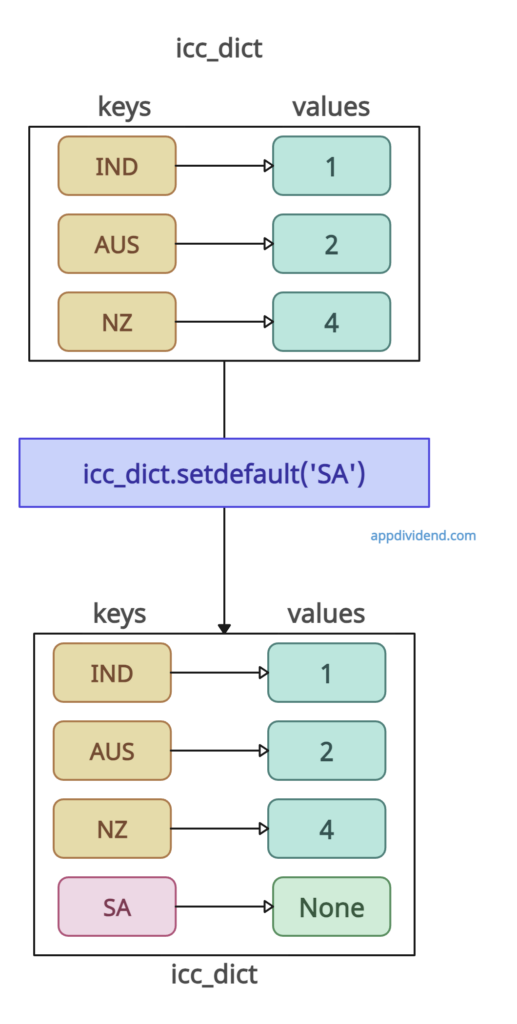Here are three ways to add an element if a key does not exist in Python dictionary:
- Using setdefault()
- Using if statement
- Using get()
Method 1: Using setdefault()
The dict.setdefault() method checks if a key exists in the dictionary, and if not, it adds the key with a specified default value.
If the key does exist, it leaves the dictionary unchanged.
Visual Representation
Example
# dictionary
icc_dict = {'IND': 1, 'AUS': 2}
# Add a new element if the key does not exist
icc_dict.setdefault('NZ', 4)
print(icc_dict)
# If the key already exists, the dictionary remains unchanged
icc_dict.setdefault('AUS', 5)
print(icc_dict)Output
{'IND': 1, 'AUS': 2, 'NZ': 4}
{'IND': 1, 'AUS': 2, 'NZ': 4}If no default value is passed, None is added as the default value.
Visual Representation
Example
icc_dict.setdefault('SA')
print(icc_dict)Output
{'IND': 1, 'AUS': 2, 'NZ': 4, 'SA': None}Method 2: Using if statement
The if statement checks whether a key exists in the dictionary and, if not, adds the key-value pair to the dictionary.
Visual Representation
Example
# dictionary
icc_dict = {'IND': 1, 'AUS': 2}
if 'NZ' not in icc_dict:
icc_dict['NZ'] = 4
print(icc_dict)Output
{'IND': 1, 'AUS': 2, 'NZ': 4}Method 3: Using get()
You can use dict.get() in combination with an assignment to add a key-value pair if the key does not exist.
This method is less efficient than the two previously mentioned methods, but still a valid approach and can be useful in certain contexts.
Example
# dictionary
icc_dict = {'IND': 1, 'AUS': 2}
# Use dict.get() to check the key and add it if it doesn't exist
if icc_dict.get('NZ') is None:
icc_dict['NZ'] = 4
print(icc_dict)Output
{'IND': 1, 'AUS': 2, 'NZ': 4}



